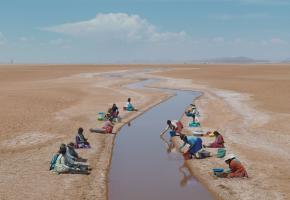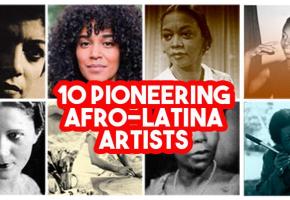Coco is the delightful tale of 12- year old Miguel Rivera (voiced by Anthony Gonzalez) who dreams of being a famous musician like his idol Ernesto de la Cruz (Benjamin Bratt). But music in his family it totally prohibited, due to the fact that Miguel’s great great grandfather allegedly abandoning his wife and daughter Coco in search of a career in music. The spurned wife forged a career as a shoemaker, a profession passed down ever since and Miguel is expected to follow suit. But Miguel loves music and, with street dog in toe, his quest to become a musician against his family’s wishes takes him (somewhat accidentally) to the ‘Land of the Dead’ where the story unfolds and he discovers his real family history, with its many twists.
Premiered in Mexico Oct 27th 2017 only days before el ‘Día de los Muertos Coco is the first film with a nine-digit budget, live action or animation, to feature an all-Latino cast. Surprisingly, in China, it is the second most popular, ever animated film, after Zootopia (2016), breaking all Chinese records.
This is a riveting, colourful and mad journey into the Land of the Dead, with animation to die for, exquisite colour and music. The characters are beautifully drawn and much merit goes to the writers Mathew Aldrich and Adrian Molina. Molina, credited with an unusual gift for storylines and humour, has risen so fast up the ranks that he was also appointed co-director. I am certain we will see more of this young man’s work. Unkrich spotted Molina’s talent as far back as in Monsters Inc. Originally, he was a storyboard artist, but he started to contribute story ideas to the screenplay and eventually on Toy Story 3 and now on Coco, he became a vital member of the core group that was developing the story.

The whole film is a heady visual feast, with a great deal of warmth, catchy tunes and interesting characters. Overflowing with humour, it still manages to respect the ‘Day of the Dead’ traditions. Nevertheless, the film has not been without its controversy as Disney made a request to trademark the phrase: “Día de Los Muertos”, for merchandising applications. The Mexican -American Community fought the attempt, mocking cartoons abounded with Mickey Mouse and Godzilla as skeletons, and over 21.000 people signed a petition on Change.org to prevent what was considered to be a “cultural appropriation and exploitation at its worst.” Disney decided to cancel the attempt, although they insisted it had only been to protect the title of the film for related activities, i.e. merchandise. They decided to change the film title.
Unkrich originally came up with an idea about an American child learning about his Mexican heritage as he dealt with the death of his mother. The story evolved and when it was decided to feature a Mexican child instead, the Pixar team made several trips to Mexico to research the characters and culture. The vivid colours with the originality and humour of the skeletons of the Día de Los Muertos affected them all and the eventual story developed from there. Adrian Molina, of Mexican heritage himself, helped Unkrich with the storylines, as Unkrich was concerned with the responsibility of dealing with a country’s real culture, while not being a Latino himself.
The pre-production process and in particular, script development is a lengthy and detailed process at Pixar Films. Thanks to this, the stories become more powerful and believable, and much of Pixar’s phenomenal success is due to that effort. Huge changes can take place. Whereas, initially. the story had been of a child discovering his heritage as he mourns for his mother, learning to ‘let her go’, the team then realized that the whole premise of the ‘Día de Los Muertos’ was totally the opposite, being based on ‘always remembering and honouring’ your ancestors. The team learnt that there was a powerful Mexican notion that there can be, not one, but three deaths for each individual.
The first one being when our heart stops, and we’re no longer alive. The second being when we’re buried (or cremated), and no one alive can see us any longer. Then, we have the potential to die a third and final death, when there’s nobody left among the living who can still remember us. This led to many wonderful sequences in the Land of the Dead which were very poignant, heartfelt and also very funny.
Technically the animation is astounding, skeletons are not easy to animate, having no ‘body’ to move around, especially in 3D, so this was a particular challenge. Unkrich had a vision of what the Land of the Dead might look like, and it took a long time to develop skeletons “that were appealing, and not frightening” as well as the sheer, mise-en-scène, development of the vast Land of the Dead landscapes that they created. There were scenes with literally thousands of animated skeletons which is, in a sense. a geometrical nightmare, but thanks to the accumulated knowledge of so many films, Pixar animators succeeded in making a believable and beautiful-to-look-at film. The colours and effects are mind blowing, and for once I feel like using the Americanism “awesome”
My only concern has been what I see as the ‘Disney’ influence. There are parts that are over- sentimental, touching on the corny, which is an ingredient Pixar Films had never had before, so I can only hope this is not something we will see more of in the future, and that Pixar will manage to avoid too much ‘Disneyfication’.
Coco (2017) will be on our screens in the UK from January 19th 2018.
Director: Lee Unkrich, co-director Adrian Molina
Screenwriters: Adrian Molina and Mathew Aldrich
Music Michael Giacchino
Producer: Darla K. Anderson
A Pixar/Disney Production.
Miguel Anthony Gonzalez
Héctor Gaël García Bernal
Ernesto de La Cruz Benjamin Bratt
Mama Imelda Alanna Ubach
Papa Jaime Camil
Abuelita Renée Victor

















